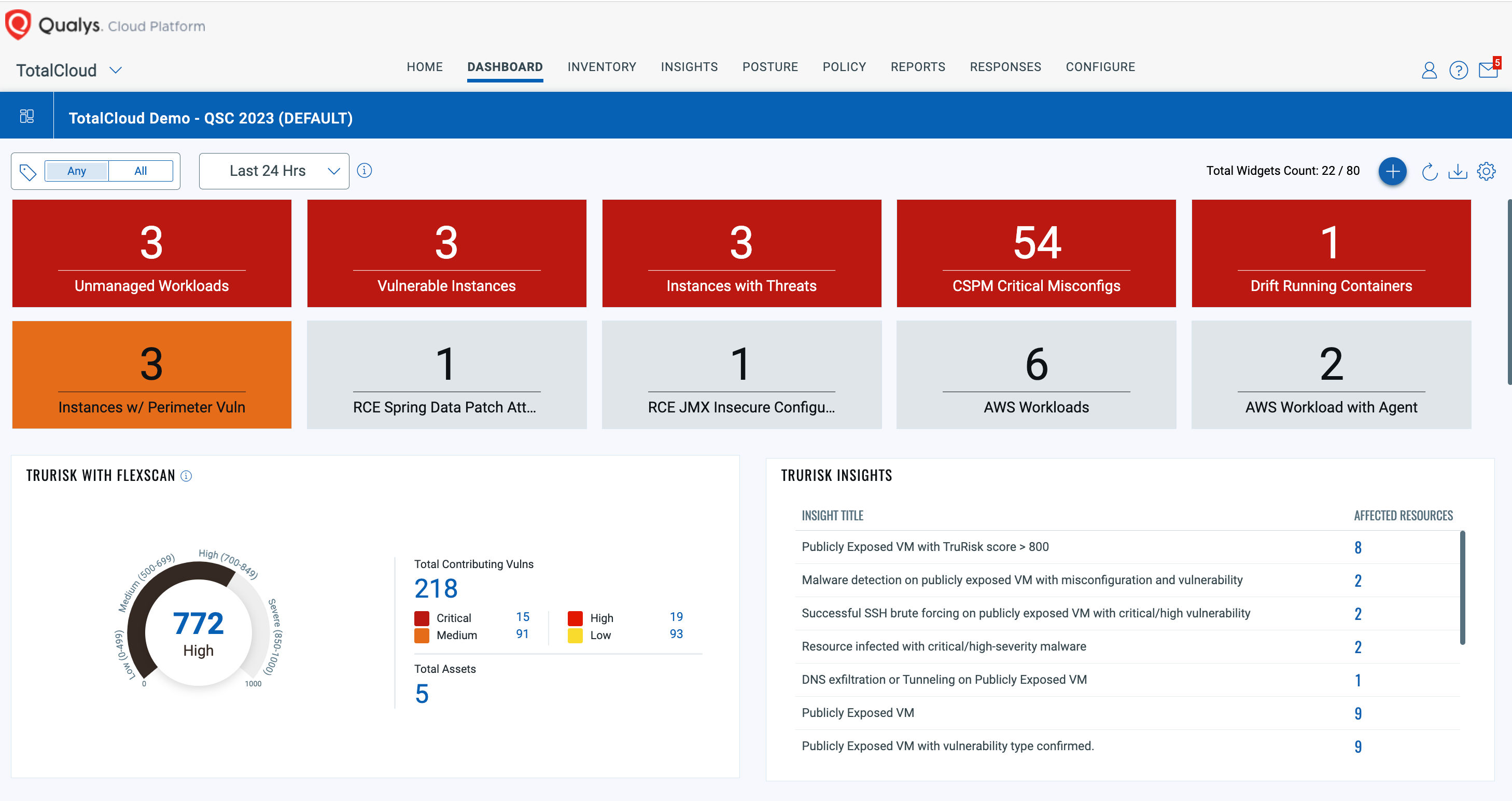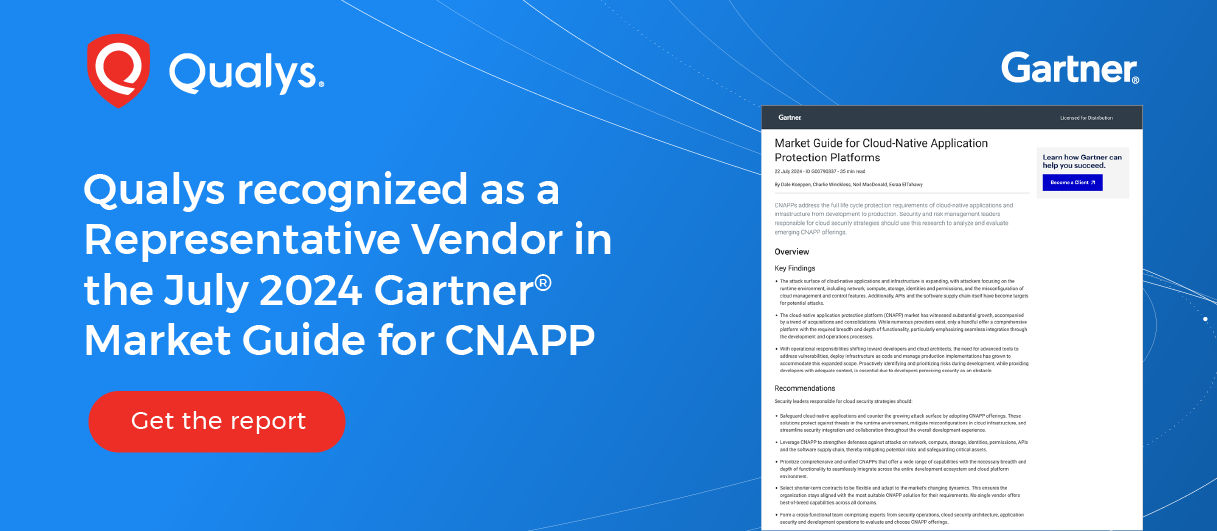Key Takeaways from the 2024 Gartner Cloud Security Report on CNAPP

Table of Contents
Are your cloud-native applications and multi-cloud infrastructure adequately protected against evolving threats? How confident are you in your current security measures for cloud workloads and containerized environments?
The recent Gartner Market Guide for Cloud-Native Application Protection Platforms (CNAPP) delves into these critical issues, offering valuable insights into the challenges and solutions in the cloud security landscape. CNAPPs have emerged as a comprehensive approach to addressing these challenges by combining multiple security capabilities into a unified platform. Let us explore some of our key takeaways from the Gartner Market Guide and what they mean for organizations looking to enhance their cloud security posture.
Get your complimentary copy of the 2024 Gartner Marketing Guide to Cloud-Native Application Protection Platform (CNAPP).
How the Rise of Cloud-Native Applications Is Driving CNAPP Adoption
Cloud-Native Application Protection Platforms are a significant shift in how organizations approach cloud security. A Cloud-Native Application Protection Platform (CNAPP) is a comprehensive cloud security solution that integrates the capabilities of various tools, including Cloud Security Posture Management (CSPM), Cloud Workload Protection Platform (CWPP), Kubernetes Security Posture Management (KSPM), and Cloud Infrastructure Entitlement Management (CIEM), into a single, unified platform. CNAPPs secure cloud infrastructure and applications across all lifecycle stages, reducing operational complexity, providing better risk prioritization through a holistic view, and fostering collaboration among previously siloed teams such as developers, DevOps, and security. This consolidation addresses the growing complexity of cloud environments and the need for a more streamlined approach to security. By bringing together multiple security capabilities, CNAPPs offer organizations a more efficient and effective way to manage their cloud security risks.

Factors behind Companies Adopting CNAPP ?
The Gartner report has three strategic planning assumptions behind the increasing adoption of CNAPP solutions:
- By 2029, 60% of enterprises that do not deploy a unified CNAPP solution within their cloud architecture will lack extensive visibility into the cloud attack surface and consequently fail to achieve their desired zero-trust goals.
- By 2029, more than 80% of enterprises will adopt a centralized platform engineering and operations approach to facilitate DevOps self-service and scaling, from less than 30% in 2023.
- By 2029, 35% of all enterprise applications will run in containers, an increase from less than 15% in 2023.
Why CNAPPs Are Essential for Breaking Silos and Strengthening DevSecOps
CNAPPs eliminate the silos between application development, cloud architecture, and security operations teams by providing a centralized platform. This integration enhances communication and risk identification throughout the development lifecycle. Real-time insights into workloads and effective vulnerability management are delivered by Cloud-Native Application Protection Platforms (CNAPPs), which provide a comprehensive evaluation of different components and characteristics within application and cloud environments. They strongly emphasize empowering developers to take responsibility for application risk, ensuring that security is an integral part of the development process.

Qualys Takeaways from the Gartner CNAPP Report
These are our insights from the report:
1. Comprehensive Visibility and Context
The appeal of CNAPP solutions has surged mainly due to their promise of improved visibility. In many cases, it’s the CTO and DevOps teams that initially buy a CNAPP solution with this aim. Nevertheless, it is vital that this visibility is accompanied by context about vulnerabilities and assets, which is indispensable for any Chief Information Security Officer (CISO).
“Prioritize comprehensive and unified CNAPPs that offer a wide range of capabilities with the necessary breadth and depth of functionality to seamlessly integrate across the entire development ecosystem and cloud platform environment.”
– 2024 Gartner Market Guide for Cloud-Native Application Protection Platforms
Qualys TotalCloud extends the unrivaled asset visibility and threat context with a consolidated view of all assets dispersed between multi-cloud, containers, and on-premises. Qualys TotalCloud with FlexScan offers customers flexibility by providing both agent-based and multiple agentless assessment options, including API-based, network-based, and snapshot-based scans, allowing comprehensive cloud security coverage tailored to different workload types and requirements.

2. Compliance Management at the speed of cloud
Compliance management is an overarching and potentially expensive endeavor that affects DevOps, security, and beyond. A robust CNAPP should support policy-driven security via its cloud security posture management (CSPM) module, allowing organizations to define and enforce security policies consistently across their cloud environments, by regional and vertically relevant mandates. Policies should cover aspects such as access control, encryption, and data protection. The ability to create and manage policies centrally ensures that security practices are standardized and adhered to, reducing the risk of misconfigurations and non-compliance.
“Clients also desire to integrate security and compliance testing seamlessly and transparently into modern DevOps (referred to as DevSecOps) in a manner that balances security and speed and doesn’t unnecessarily slow down digital innovation”.
– 2024 Gartner Market Guide for Cloud-Native Application Protection Platforms
The Qualys Enterprise Platform has long been focused on unifying compliance and policy management with vulnerability management. This is also the case with TotalCloud. With a robust Cloud Security Posture Management (CSPM), Cloud Workload Protection (CWP) as well as cloud infrastructure entitlement management (CIEM), CISOs and other security stakeholders can uphold and support Zero-Trust working models as they adhere to the world’s leading compliance mandates.

3. The ability to measure, communicate, and eliminate risk based on exploitable business impact
Prioritizing risk findings is essential because developers and security professionals are overwhelmed by alerts and results from isolated and siloed tools.
“Combining the need for runtime risk visibility, cloud risk visibility and development artifact risk visibility results in a robust integrated set of capabilities needed for a complete CNAPP platform”.
– 2024 Gartner Market Guide for Cloud-Native Application Protection Platforms
Qualys solves this for organizations with TruRisk Insights. Typically, cloud security measures involve point solutions doing misconfiguration checks, vulnerability management, identities with excessive permissions or active threats. TruRisk Insights correlates data from all these sources and creates one prioritized list of issues, so you can fix what matters most first. This comprehensive approach enables organizations to bridge the gap between technical vulnerabilities and their business impact, helping more effective decision-making and resource allocation. This helps cybersecurity teams prioritize remediation efforts by focusing on the most critical issues first, thereby optimizing their efforts and reducing the mean time to remediation. By integrating multiple risk factors and correlating them with real-world threats like ransomware and malware, TruRisk Insights ensures that organizations can address the most pressing security concerns efficiently and effectively.
4. Real-Time Threat Detection and Response
Real-time threat detection and response capabilities in a CNAPP is crucial for an organization. Ideally, CNAPPs should use machine learning (ML) and AI learning to bolster anomaly detection and risk-based prioritization. Without an advanced learning model that can inform the risk context with up-to-date granular data, threat detection and response to vulnerabilities in the cloud are likely to be slow, incomplete, or missed altogether.
Qualys TotalCloud extends contextual analysis with real-time cloud threat detection and response (CDR) by using deep learning AI to detect both known and unknown threats in real time without relying on traditional signature-based methods. The result is up to 40% faster mean-time-to-discover (MTTD) and 6x faster mean-time-to-remediate (MTTR) — everywhere.

5. Seamless developer integration
One challenge to the adoption of CNAPP is the perception that security teams hinder the rapid pace of contemporary DevOps processes. With broader acceptance of DevSecOps frameworks, it is imperative for organizations to consider CNAPPs who provide avenues to unite these siloed organizations.
“By having consistently enforced policies and by risk-prioritizing remediation efforts, a unified CNAPP offering should reduce developer friction and improve developer experience.”
– 2024 Gartner Market Guide for Cloud-Native Application Protection Platforms
Qualys TotalCloud integrates seamlessly with CI/CD tools such as Azure DevOps and Jenkins, allowing DevOps teams to incorporate security scans into their workflows, enhancing early detection and remediation of vulnerabilities in the software development lifecycle. It supports integration with developer platforms like GitHub, Bitbucket, and GitLab, providing real-time assessments of cloud misconfigurations and enabling developers to keep secure and compliant cloud environments. Qualys TotalCloud provides security from development through runtime, bolstered by build-tools, registries, Kubernetes implementations, and container runtime security that support DevOps activities to be in line with security needs.

At Qualys, we believe we align with the key requirements from the Gartner report, recognizing that the true strength of a CNAPP is in its ability to scale business operations without compromising security for organizations, and breaking down silos between development and security teams. We are proud to be a Representative Vendor in the 2024 Gartner CNAPP Market Guide.
How Qualys Can Help You Navigate Cloud Security Magic Quadrant Solutions
If you want to dive deeper into CNAPP, download the 2024 Gartner CNAPP Market Guide, explore more about the Qualys TotalCloud Platform, get a customized and complimentary TotalCloud TruRisk Insights report, read our FAQ, or speak to a Qualys TotalCloud CNAPP Expert.
Gartner, Market Guide for Cloud-Native Application Protection Platforms, Dale Koeppen, Charlie Winckless, Neil MacDonald, Esraa ElTahawy, 22 July 2024
GARTNER is a registered trademark and service mark of Gartner, Inc. and/or its affiliates in the U.S. and internationally and is used herein with permission. All rights reserved.
Gartner does not endorse any vendor, product or service depicted in its research publications and does not advise technology users to select only those vendors with the highest ratings or other designation. Gartner research publications consist of the opinions of Gartner’s research organization and should not be construed as statements of fact. Gartner disclaims all warranties, expressed or implied, with respect to this research, including any warranties of merchantability or fitness for a particular purpose.
